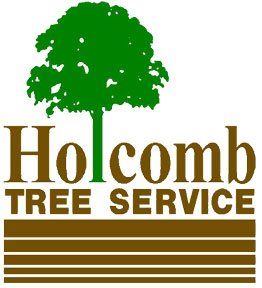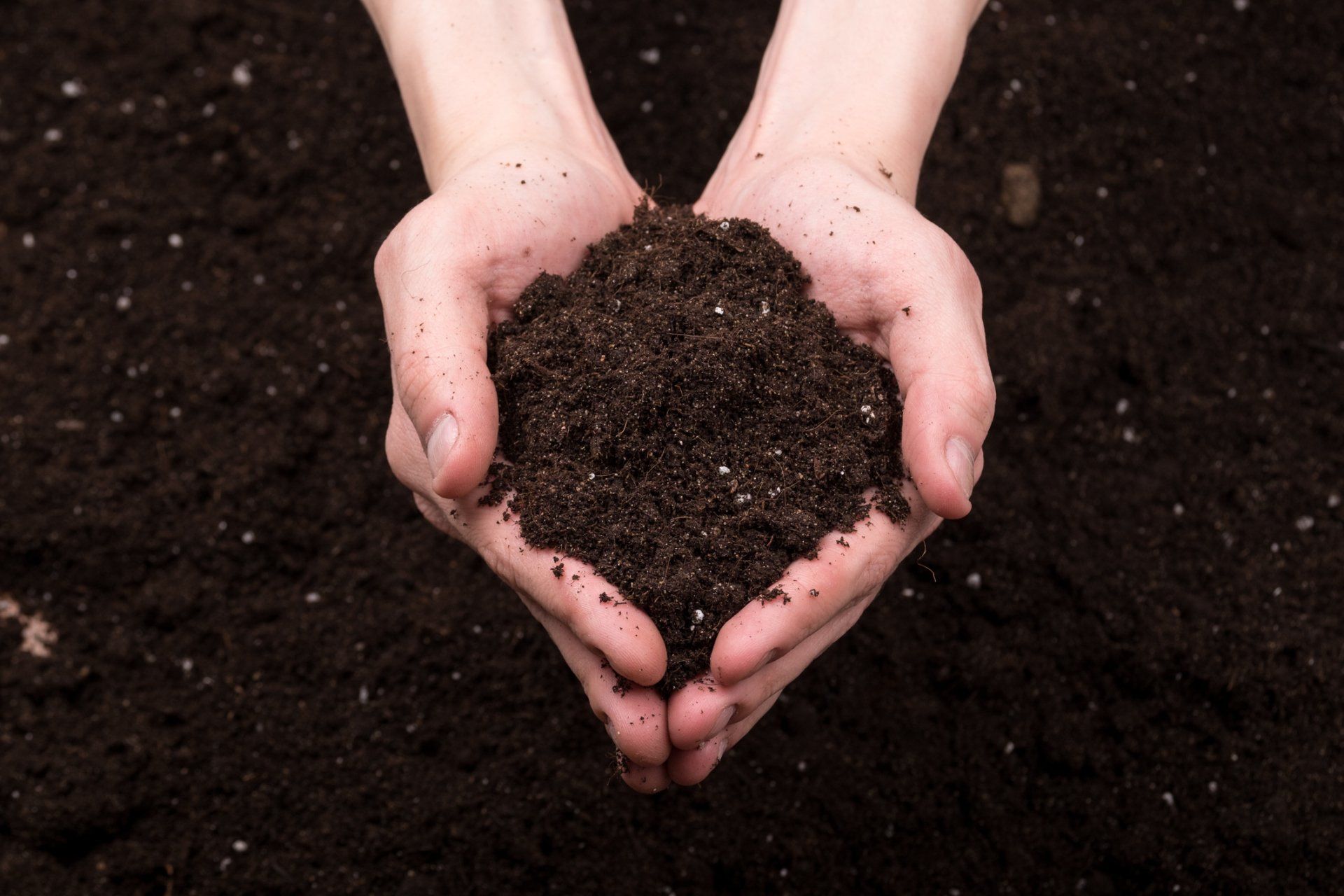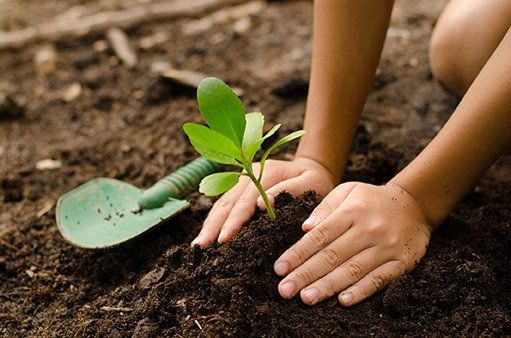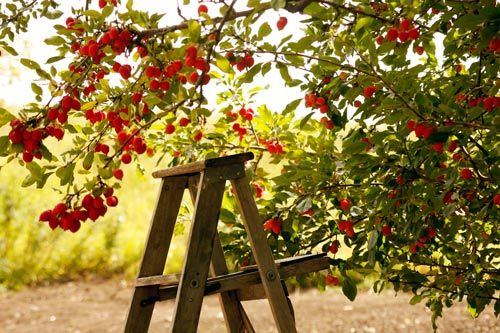BE AWARE OF ROOT FLARE TO GROW HEALTHIER TREES
- By Holcomb Tree Service
- •
- 29 Nov, 2018
- •
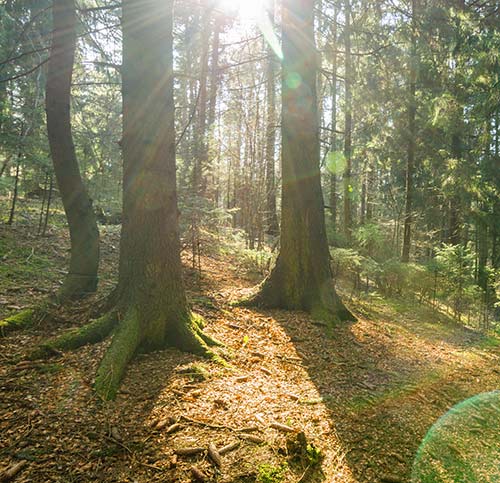
Did you know that your tree's roots need to seriously flare out to grow tall and healthy? Especially in the case of the oaks, pecans, and ornamental trees beloved by people in Dallas. This guide explains some of the things you should know about this important feature of healthy trees.
Tree Trunks Should Flare Out At Ground Level
At the bottom of a healthy tree's trunk, slightly above the soil level, is the shoulder or root flare of the tree. This is where the trunk transitions from rough protective bark to smooth roots.
Typically, a tree will send out 6 to 10 anchor roots that are visible above the ground. The bigger anchor roots are raised several inches off the ground and slope down to underground roots. Because the roots are exposed to the air, the larger anchor roots grow bark to protect the delicate tissue of the roots.
If your tree doesn't have any root flare but resembles a telephone pole jutting straight out of the ground, then you may have a problem. When a tree has no root flare, it's a sure sign that the tree was planted too deeply. In some cases, a lack of root flare is the result of sediment deposits from development, flooding, or improper landscaping techniques.
Soil and Root Flare Don't Mix
When you plant a tree too deeply or dump soil on top of a tree's root flare, you cause several problems. One of the worst issues is suffocation of the tree over time. Heavy soil reduces the number and effectiveness of the roots that are responsible for the tree's respiration.
Feeder roots may begin to wrap around the trunk of the tree. Some experts believe this girdles an affected tree and chokes off nutrients and water, causing the tree to die.
Wet soil and bark are not made to be exposed to each other. Tree bark is a great protective covering, but it can break down or be contaminated by pests and fungi when exposed to wet, compacted soil for long periods.
The smooth surface of roots can develop into tree bark when exposed to air. However, tree bark can't morph back into a smooth root surface to hold up under the soil. When soil builds up over the bark-covered root flare, the bark will eventually decompose the anchor roots and reduce the stability of the entire tree.
Root Flare Issues Can Be Solved
If your trees have healthy root flares, then you can keep them that way by following good landscaping practices. Be careful when mowing, pruning, or working around your trees to protect anchor roots from being cut, crushed, or wounded. Other root flare tips include:
- Don't place flower beds over root flares
- Don't plant shrubbery over root flares
- Don't place mulch on root flares
- Don't add paving or compaction near root flares
Your tree service can sometimes safely uncover the root flare in trees that have had the roots buried under too much soil. This is a delicate process since the roots must remain intact as the soil is dug and scraped away. In some cases, a tree may be saved by moving it to a new or improved location.
Young trees are easier to reposition in the soil if their root flares are inadvertently covered. Your tree service has tools and equipment to remove, reposition, and replace trees for optimum root flare care.
Contact our team at Holcomb Tree Service to schedule an inspection of your trees' root flare health. Our certified arborists can diagnose the problems and help you find solutions to treat or replace your trees. Give us a call to learn more.
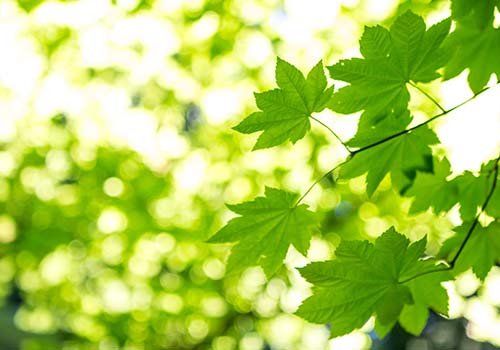
After living in your home for a while, you may turn your attention toward resale value. Even if selling your house is still years away, it is never too early to look into ways you can get the most out of your investment. There are a number of ways resale value can be added, and one easy method is to plant a new, healthy tree.
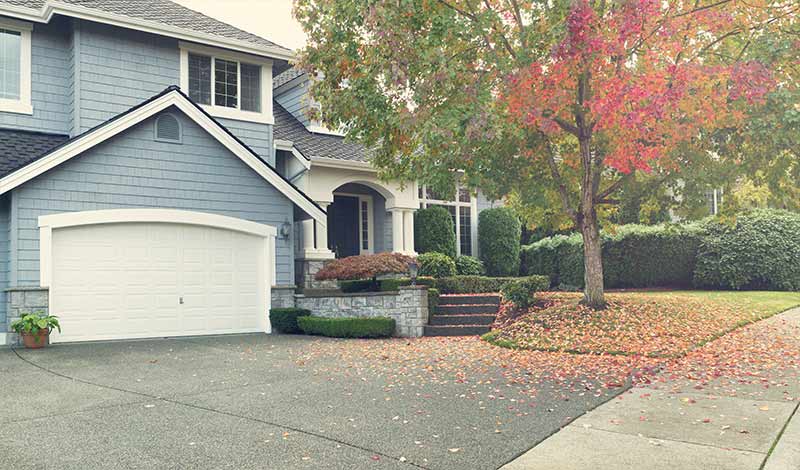
Healthy, appealing trees offer enormous benefits some of which may surprise you. Not only will trees in your landscape design improve curb appeal and increase your home's property value, but they can also aid in energy efficiency. While surprising to learn, trees that shade your home, windows and outdoor AC units can reduce cooling costs in the summer by 35%.
Planting young trees around your home will add curb appeal, but the lack of height and foliage will not help your heating and cooling costs. Therefore, you should plant attractive trees that will grow quickly, producing shade for energy conservation within a few years. This guide, and your contractor's help to maintain will help you know which attractive, fast-growing and shade-producing trees you should consider for your yard.
Crabapple Tree
One tree that adds color, texture and a great deal of shade, while also being easy to grow and maintain, is the Crabapple tree. The tree produces blooms of lush pink flowers in the spring and thick green foliage through the summer and fall. This foliage shades your home with ease.
Since the tree's branches grow up, instead of out, this tree is the perfect option for your home's exterior and outdoor AC units. Be sure to prune away dead flowers and limbs in the early part of winter to ensure new growth in the spring and summer.
River Birch Tree
The river birch is another fast-growing, shade-producing tree that will make a big impact on your landscape design and heating and cooling costs. This tree is also easy to grow, and survives in most soil conditions and requires very little water once established.
Also, the River Birch thrives in areas of your yard that receives full sun. Planting this tree close to a sunny outdoor living area will keep you and your guests under comfortable shade. In addition, planting these trees next to your home's exterior windows will help reduce cooling costs.
It is important to note that the River Birch is a massive tree. On average, it can grow up to 50 or 90 feet tall. Because of its height, avoid planting the tree near power lines.
To ensure the tree remains attractive and healthy, trim off dead foliage and fertilize in the fall.
Crepe Myrtle Tree
A Crepe Myrtle is definitely one of the easiest trees to grow since it does not require any special soil conditions and is heat and drought-tolerant. Its unique shape has been compared to a mushroom cloud. This tree has either a single trunk or a multitude of trunks that intertwine together.
You will love the floral blooms that occur at the end of spring and early summer. In most climates, the blooms will continue through the early part of fall as well. Available in a large variety of colors including white, pink, red and purple, the Crepe Myrtle tree adds appeal, shade and value to your home.
While easy to grow, the Crepe Myrtle does require a decent amount of maintenance to keep it healthy and attractive. To protect its shape, pruning off dying foliage and branches at the end of winter is important.
Flowering Dogwood
There are many varieties of the Flowering Dogwood tree to consider. From the Barton species, which produces white blooms in the spring and grows to a height of 25 feet, or a Japanese Dogwood, which offers vibrant pink and red blooms in the spring and summer, the possibilities are endless.
No matter which species you choose, a Flowering Dogwood is a great option for areas of your yard that receive full sun or partial shade.
In the fall season, trim away dead overgrowth and dying blooms before fertilizing. This will help the tree survive the harsh winter temperatures.
To learn more about planting and maintaining your fast-growing, shade-producing trees, contact the professionals at Holcomb Tree Service today.
No matter which species you choose, a Flowering Dogwood is a great option for areas of your yard that receive full sun or partial shade.
In the fall season, trim away dead overgrowth and dying blooms before fertilizing. This will help the tree survive the harsh winter temperatures.
To learn more about planting and maintaining your fast-growing, shade-producing trees, contact the professionals at Holcomb Tree Service today.
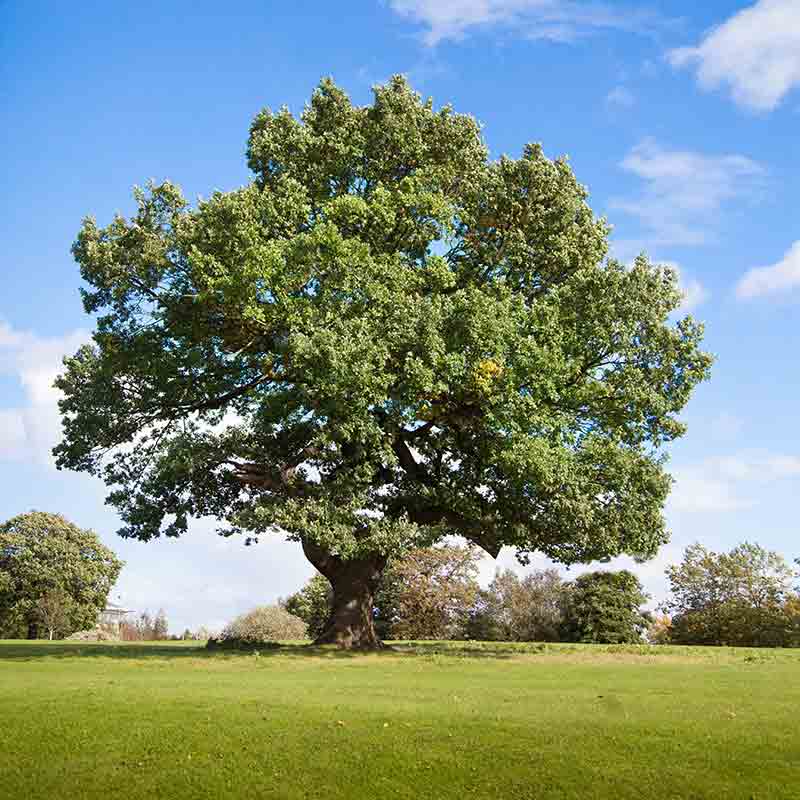
If you are looking to invest in the long-term value of your property, one of the best options is planting trees. According to several estimates, healthy, mature trees can add 10 to 20 percent to a home's worth. Besides aesthetic appeal, trees can also cool houses and produce fruits and nuts.
But, not all trees are equally valuable. By selecting species that will thrive and contribute to a home's environment, you may make your property much more appealing to buyers. These five steps will help you decide which new trees to plant near your home in Dallas, TX, and the surrounding areas.

Healthy, appealing trees offer enormous benefits some of which may surprise you. Not only will trees in your landscape design improve curb appeal and increase your home's property value, but they can also aid in energy efficiency. While surprising to learn, trees that shade your home, windows and outdoor AC units can reduce cooling costs in the summer by 35%.
Planting young trees around your home will add curb appeal, but the lack of height and foliage will not help your heating and cooling costs. Therefore, you should plant attractive trees that will grow quickly, producing shade for energy conservation within a few years. This guide, and your contractor's help to maintain, will help you know which attractive, fast-growing and shade-producing trees you should consider for your yard.
Planting young trees around your home will add curb appeal, but the lack of height and foliage will not help your heating and cooling costs. Therefore, you should plant attractive trees that will grow quickly, producing shade for energy conservation within a few years. This guide, and your contractor's help to maintain, will help you know which attractive, fast-growing and shade-producing trees you should consider for your yard.
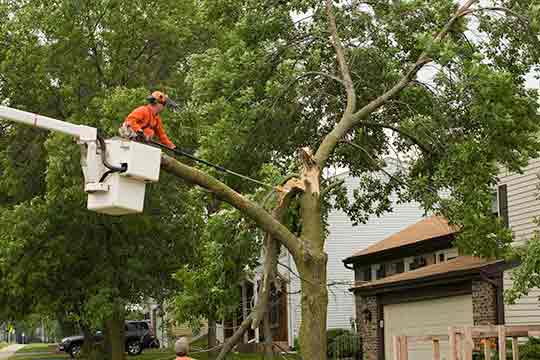
Storms can do a considerable amount of damage to your trees and to your landscaping in general. From cracked tree branches to flooded root systems, the damage caused by a storm can have a long-lasting effect on your trees' health. After a big storm blows through, it is a good idea to assess your trees for damage, and also to mitigate a few other common problems the storm may have caused. Complete these four tasks, and you should be on the right track.

Storms can do a considerable amount of damage to your trees and to your landscaping in general. From cracked tree branches to flooded root systems, the damage caused by a storm can have a long-lasting effect on your trees' health. After a big storm blows through, it is a good idea to assess your trees for damage, and also to mitigate a few other common problems the storm may have caused. Complete these four tasks, and you should be on the right track.
